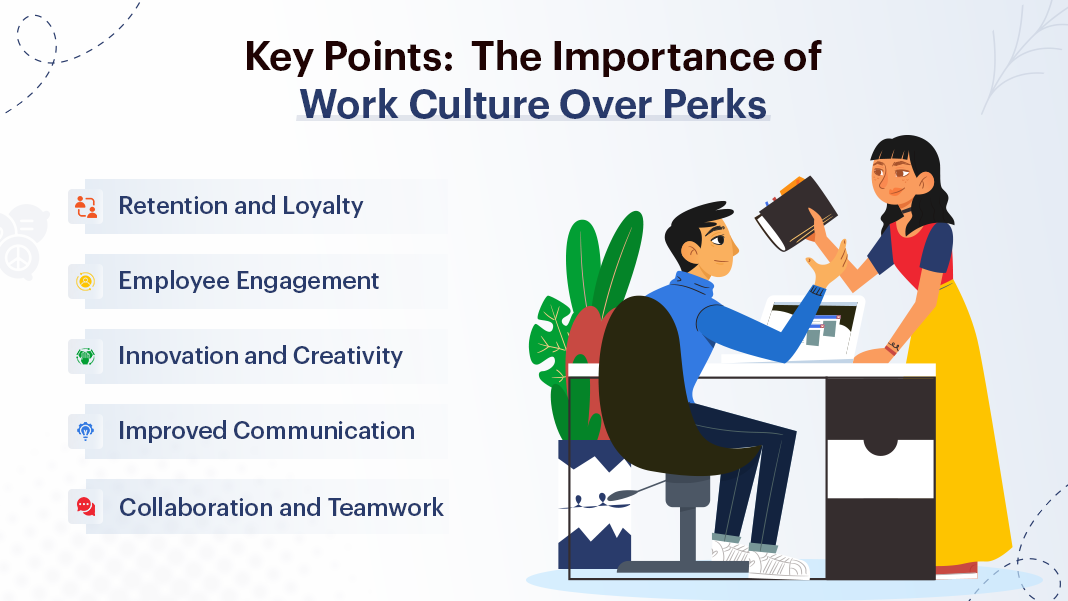With all those perks that sound flashy, from free lunches to game rooms and generous vacation policies, companies are competing for the best talent in today’s labour market. These nice additions to the workplace experience obscure a far more critical determinant of worker satisfaction: work culture.
What is Work Culture?
Work culture is the values, beliefs, and behaviours that shape how employees interact with each other and how work gets done. It’s the underlying culture in which your everyday tasks take place. A healthy work culture encourages cooperation, creativity, and trust, whereas a toxic work culture may affect employees through stress and burnout.
Work Culture and Employee Engagement
1. Employee engagement.
A positive work culture tends to create a more attentive workforce. It gives people the feeling that they are valued and cared for, thus motivating and committed to their jobs. Motivated employees are more productive and willing to go the extra mile.
2. Retention Rates
Companies with solid cultures also tend to have fewer turnovers. Employees who believe in a company’s values have fewer turnovers, which means lower hiring costs and retaining the knowledge embedded in the institutions, which is the precursor to success in the long run.
3. Team Collaboration
If the work culture is excellent, the members are likely to share their ideas and thoughts, leading to innovative and creative answers, in most cases, pushing the company forward.
4. Work-Life Balance
A healthy workplace culture allows a balanced approach toward work and personal life. Organizations that believe in the welfare of employees tend to cultivate an atmosphere where taking breaks, working from home, and being held up with personal commitments are encouraged.
5. Welfare of Employees
If the work culture believes in the well-being of the mind, then employees would feel much safer and cared for. This will also improve morale and reduce company absenteeism and expenditure due to medical costs.
Why Perks Alone Are Not Enough?
Perks can work well to enhance the workplace; however, they are primarily symptomatic remedies and not permanent solutions. Here are some reasons why perks alone would not work:
1. Apparently Content
The right perks might mask misery, but don’t change the problem. If your staff is not feeling valued or connected to your mission, nothing—the free coffee included—will fix it.
2. Fix for the Snap
Perks can fill talent gaps but will only keep those talents when the overall culture is good. People like the perks but will leave when they are not supported or valued in their jobs.
3. Inequitable Experience
Benefits can vary widely concerning availability and impact. What one employee values, another may discount or perceive as useless. However, a quality work culture is an experience everyone shares, regardless of bias.
Why Perks Alone Are Not Enough?
Healthy work culture organizations ensure through:
Effective Communication:Promote a two-way flow of feedback and communication
Recognition:It involves appreciation and recognition of the workers throughout the year.
Inclusiveness:All persons are treated worthily and with dignity, For Professional Development, Employees should be encouraged to enhance and acquire.
Leadership Support:The leaders should serve as role models and say the values and practices they expect employees to reflect.
Conclusion
Ultimately, the most functional organizations trace their roots to a thriving work culture. While benefits may improve the work experience, they cannot compensate for the need for an appreciative and positive work environment. If workplace culture is emphasized, businesses will likely be more suited to foster engaged, committed, and productive workforces. So the next time you weigh what might boost staff satisfaction, remember that it is not all perks but rather the establishment of a culture where each employee can flourish.



